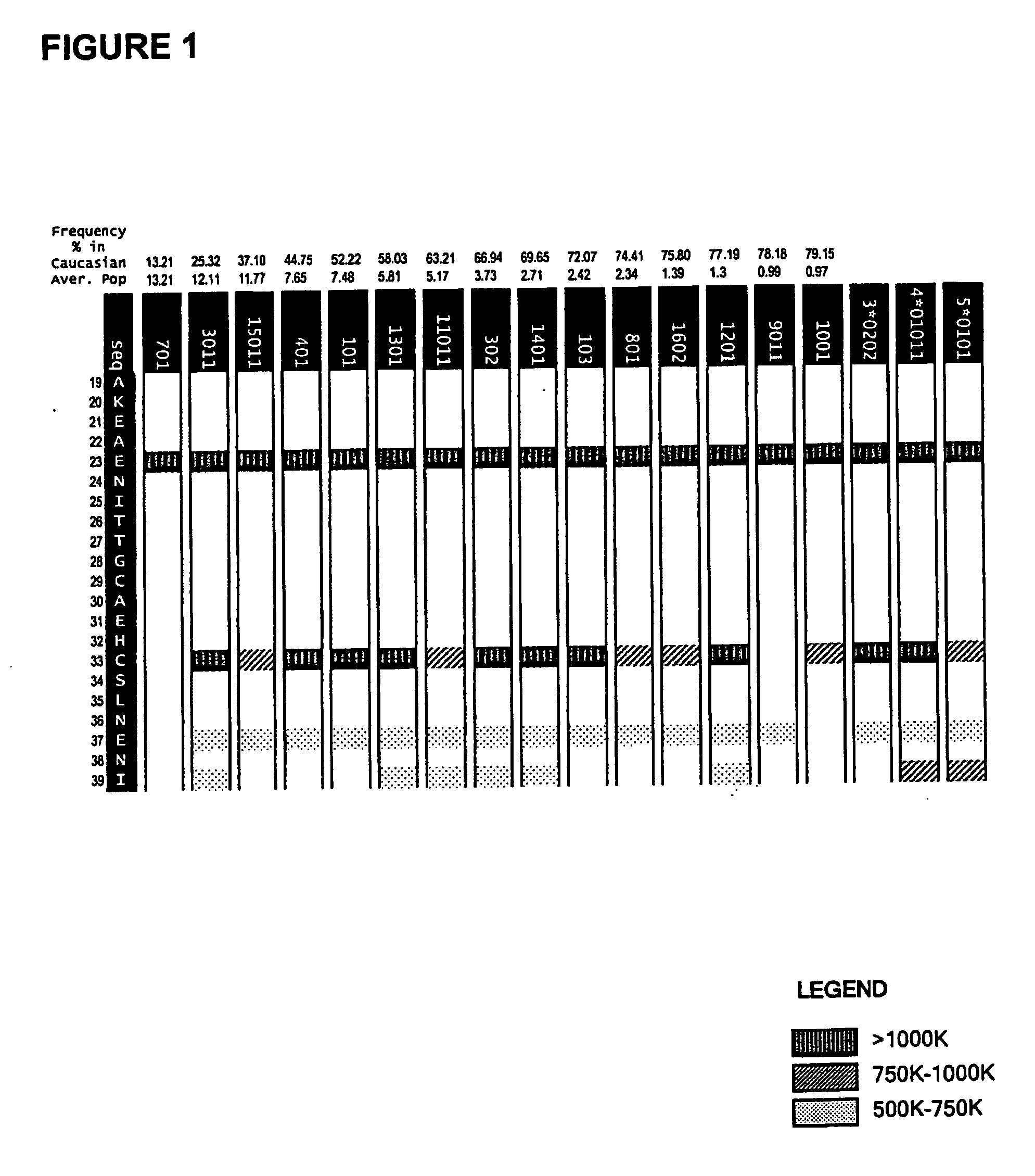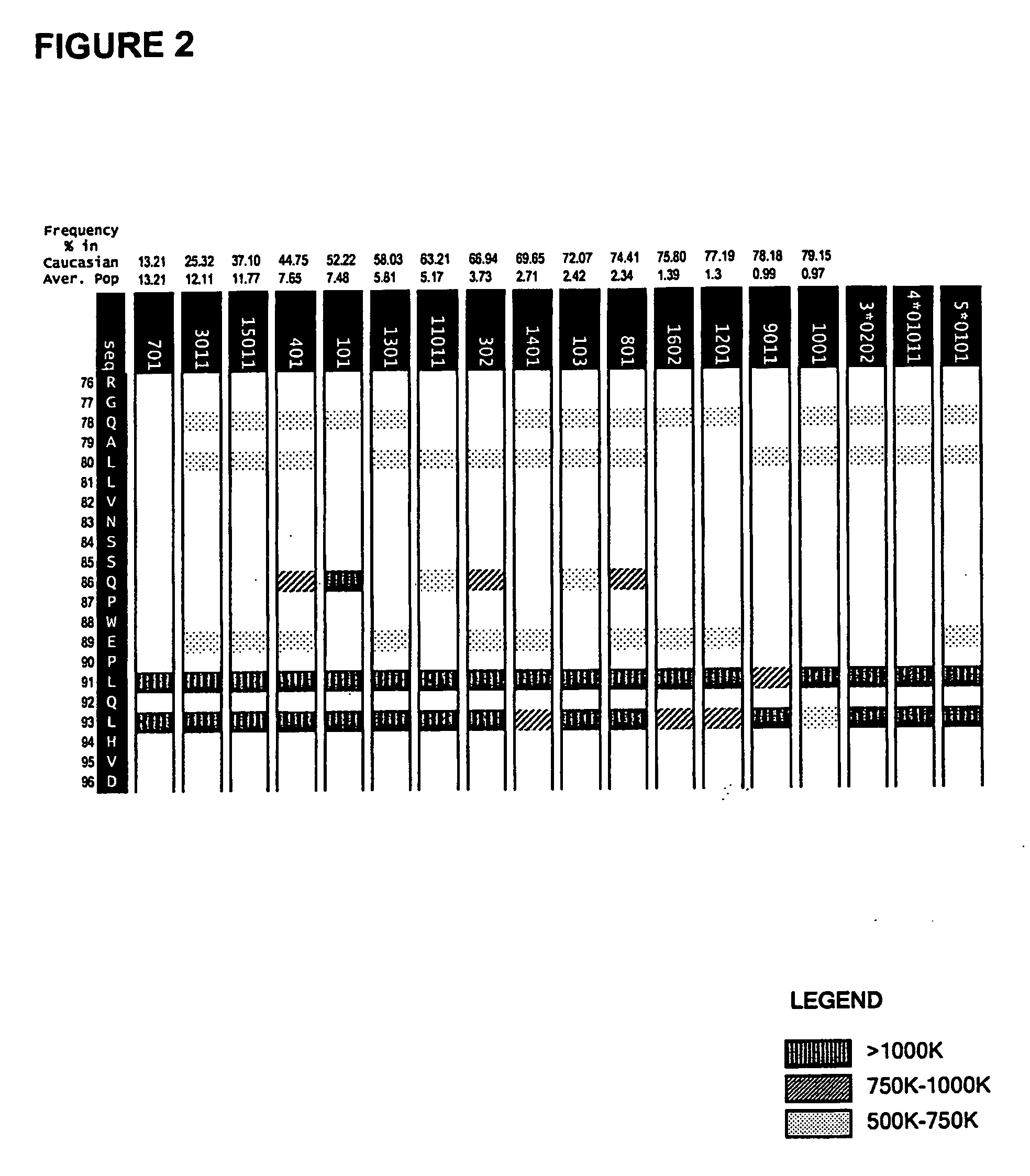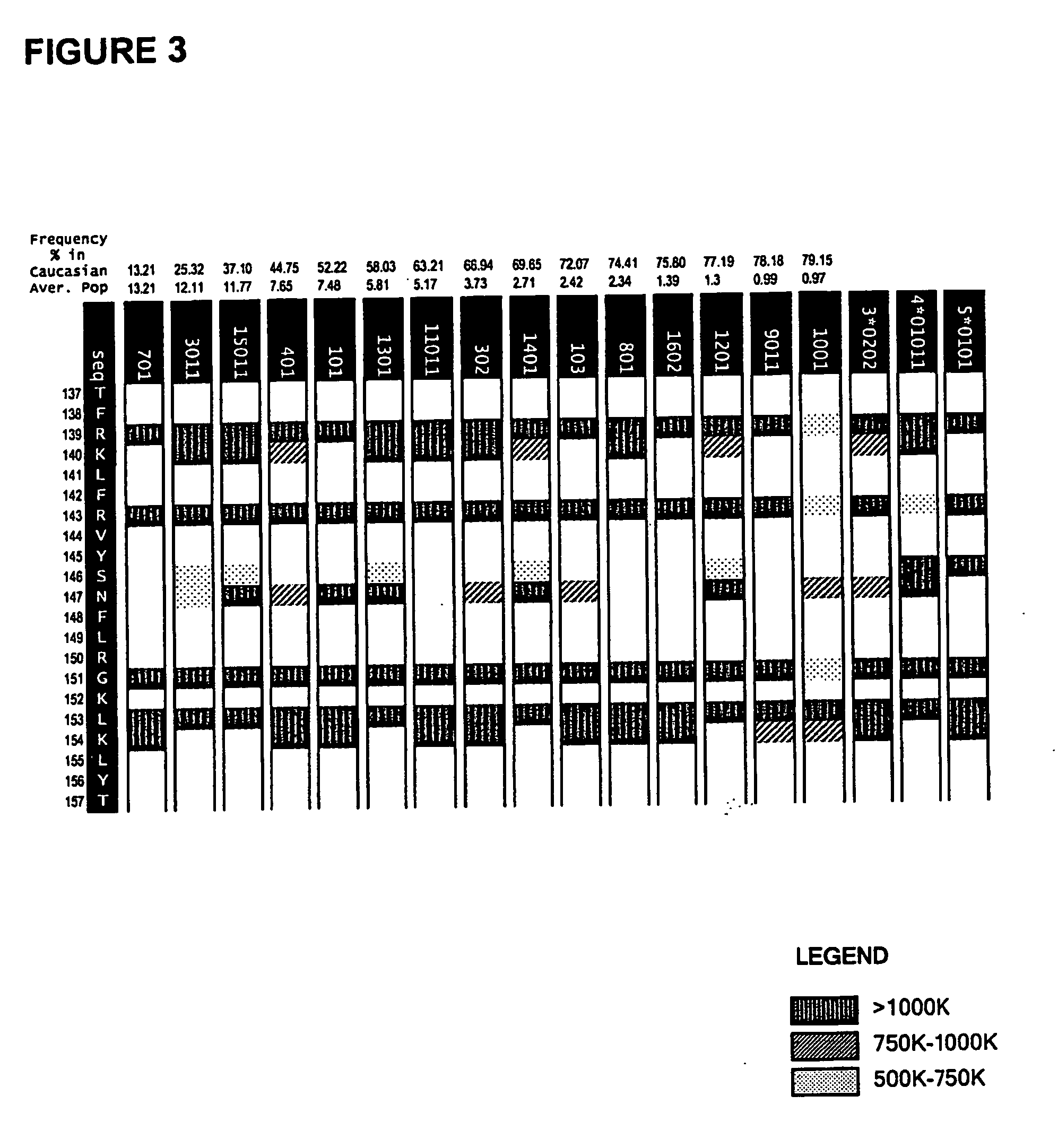T-cell epitopes in erythropoietin
a technology of erythropoietin and t-cell epitope, which is applied in the field of immunology, can solve the problems of peptides predicted to be able to bind mhc class ii molecules that may not function as t-cell epitopes in all situations, and the efficacy of a therapeutic protein is limited
- Summary
- Abstract
- Description
- Claims
- Application Information
AI Technical Summary
Benefits of technology
Problems solved by technology
Method used
Image
Examples
example 1
[0108] The interaction between MHC, peptide and T-cell receptor (TCR) provides the structural basis for the antigen specificity of T-cell recognition. T-cell proliferation assays test the binding of peptides to MHC and the recognition of MHC / peptide complexes by the TCR. In vitro T-cell proliferation assays of the present example, involve the stimulation of peripheral blood mononuclear cells (PBMCs), containing antigen presenting cells (APCs) and T-cells. Stimulation is conducted in vitro using synthetic peptide antigens, and in some experiments whole protein antigen. Stimulated T-cell proliferation is measured using 3H-thymidine (3H-Thy) and the presence of incorporated 3H-Thy assessed using scintillation counting of washed fixed cells.
[0109] Buffy coats from human blood stored for less than 12 hours were obtained from the National Blood Service (Addenbrooks Hospital, Cambridge, UK). Ficoll-paque was obtained from Amersham Pharmacia Biotech (Amersham, UK). Serum free AIM V media f...
example2
Design of Modified EPO Sequences with Improved Immunogenicity Profiles:
[0117] The method of co-owned application WO 02 / 069232 was used in an analysis of the epitope regions R1, R2 and R3. The system enables prediction of the particular MHC ligands encompassed within the biologically detected epitope regions and provides a “score” with respect to the ability of a given MHC class II ligand to interact with a particular MHC allotype.
[0118] The allotypic restriction pattern for the MHC ligands can be depicted using the allotypic restriction chart displays as provided for each of the epitope regions R1-R3 in the accompanying FIGS. 1-3.
[0119] The analysis was extended to consideration of sequence modifications within each of the epitopes R1-R3. The sequence variants were tested for continued ability bind MHC class II and their binding scores where these remained. Multiple amino acid substitutions were defined which achieved elimination of MHC class II binding with the majority of MHC ...
PUM
| Property | Measurement | Unit |
|---|---|---|
| Fraction | aaaaa | aaaaa |
| Length | aaaaa | aaaaa |
| Angle | aaaaa | aaaaa |
Abstract
Description
Claims
Application Information
 Login to View More
Login to View More - R&D
- Intellectual Property
- Life Sciences
- Materials
- Tech Scout
- Unparalleled Data Quality
- Higher Quality Content
- 60% Fewer Hallucinations
Browse by: Latest US Patents, China's latest patents, Technical Efficacy Thesaurus, Application Domain, Technology Topic, Popular Technical Reports.
© 2025 PatSnap. All rights reserved.Legal|Privacy policy|Modern Slavery Act Transparency Statement|Sitemap|About US| Contact US: help@patsnap.com



